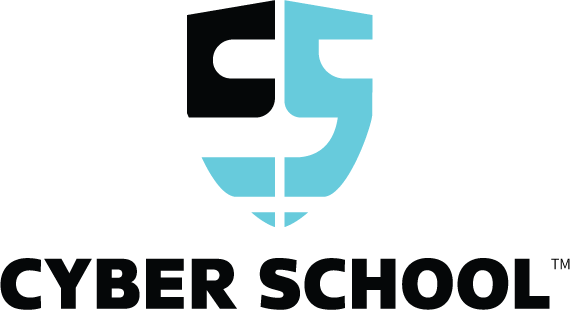Back to Course
Cyber Rangers
0% Complete
0/0 Steps
-
course overview
Syllabus | Cyber Rangers -
Zoom Links1 Topic
-
Module 1: Welcome to the Cyber SquadMorphing into a Cyber Ranger3 Topics
-
What’s in the Digital World?3 Topics
-
Cyber Threats: Meet the Villains3 Topics
-
The Cyber Defense Arsenal3 Topics
-
The Art of the Hack3 Topics
-
CTF: The First Mission2 Topics
-
Red Ranger – Network Defender (Sessions 7-10)The Power of Firewalls3 Topics
-
DDoS Attacks: When Too Much is Too Bad3 Topics
-
Wi-Fi Security: Is Your Home Network Safe?3 Topics
-
CTF Challenge – Network Defense
-
Blue Ranger – Cryptography Expert (Sessions 11-14)2048 Game - Understanding Code Logic3 Topics
-
The Secret Language of Codes3 Topics
-
Modern Encryption: How Does It Work?3 Topics
-
Breaking the Code: Ethical Decryption3 Topics
-
CTF Challenge – Cryptography
-
Yellow Ranger – Ethical Hacker (Sessions 15-18)Hacking for Good: The Role of Ethical Hackers4 Topics
-
Social Engineering: Trick or Treat?3 Topics
-
Web App Hacking: Finding Weak Spots4 Topics
-
Cross Site Scripting4 Topics
-
Green Ranger – Breaking the codeCookies and Data4 Topics
-
CTF Challenge – Javascript
-
Module 3: Cyber Crisis SimulationsIncident Response: Save the City’s Power Grid!3 Topics
-
Incident Response : Cyber Atack Unfolds3 Topics
-
Incident Response - Defend the Powergrid3 Topics
-
Incident Response : Lessons learned and report writing3 Topics
-
Understanding Data Breaches4 Topics
-
Looking for clues in a breach3 Topics
-
Data Breach Mystery: Find the Insider
-
Ransomware Attack: Pay or Fight?2 Topics
-
Module 4: The Cyber Rangers Final BattleMega CTF Tournament
-
Cyber Ranger Graduation
-
Where to Next? Exploring Cybersecurity Careers
-
Optional Content & Enrichment (10 Extra Sessions)Geographical Mapping
-
Red Team vs. Blue Team
-
Advanced Forensics
-
OSINT Challenges
-
Spy Games
-
Lockpicking 101 (Virtual)
-
Defusing a Virtual Bomb
-
AI in Cybersecurity
-
Create Your Own CTF Challenge
-
Internet of Things (IoT) Hacking
-
Cyber Rangers Hall of Fame
Participants 10
Lesson Progress
0% Complete
Lab Worksheet: “Find the Weak Link” – Web Source Code Investigation
Objective: Simulate a real hacker’s reconnaissance and discovery phase using browser developer tools to find simple web vulnerabilities in a public challenge site.
⚙️ Requirements
- Any modern web browser (Chrome, Firefox, Edge)
- Built-in Developer Tools (press
F12) - One of the following websites:
🔍 Instructions
Step 1 – Open the Challenge
- Navigate to the chosen challenge URL.
- Read the challenge description carefully — understand what the site is asking you to do.
- Without using any tools yet, try interacting with the page normally (e.g., submitting a form or clicking buttons) to see how it behaves.
Step 2 – Open Developer Tools
- Open the browser’s Developer Tools by pressing
F12or right-clicking and choosing “Inspect.” - Use the Elements tab to view the structure of the page (HTML).
- Use the Console or Sources tab to explore any JavaScript.
Step 3 – Analyze the Page
Look for the following clues in the page source:
- Comments in HTML that contain hints or credentials.
- JavaScript code that verifies input on the client side.
- Hardcoded variables, passwords, or access flags.
- Hidden form fields or values not visible on the main page.
Step 4 – Try to Manipulate Inputs
- Edit input fields directly in the Developer Tools (e.g., change a hidden field or default username).
- Resubmit the form with modified data to bypass basic checks.
- Try injecting unexpected input (e.g., special characters) into form fields to see how the site reacts.
Step 5 – Trigger the “Win” Condition
- Observe what happens when the site responds with a success message or a flag.
- Note whether the site reveals anything sensitive or gives access to the next stage.
Step 6 – Understand the Vulnerability
Once the flaw is discovered, mentally answer:
- What type of weakness allowed the page to be bypassed?
- Was it exposed information?
- A logic flaw?
- Lack of validation?
- How could a real developer fix this issue (e.g., server-side validation, remove client-side secrets, sanitize inputs)?
Step 7 – Ethics Reminder
- This exercise is done with permission, on safe environments designed for practice.
- In real life, hacking without permission is illegal.
- Cyber Rangers always hack ethically: to learn, to defend, and to improve the world.
✅ Summary
This lab simulates the reconnaissance and early exploitation phases of a real cyberattack — but in a safe, legal, educational setting.
You used built-in browser tools to inspect source code, analyze site behavior, and identify logic flaws or security weaknesses — just like ethical hackers do in real-world security testing.
